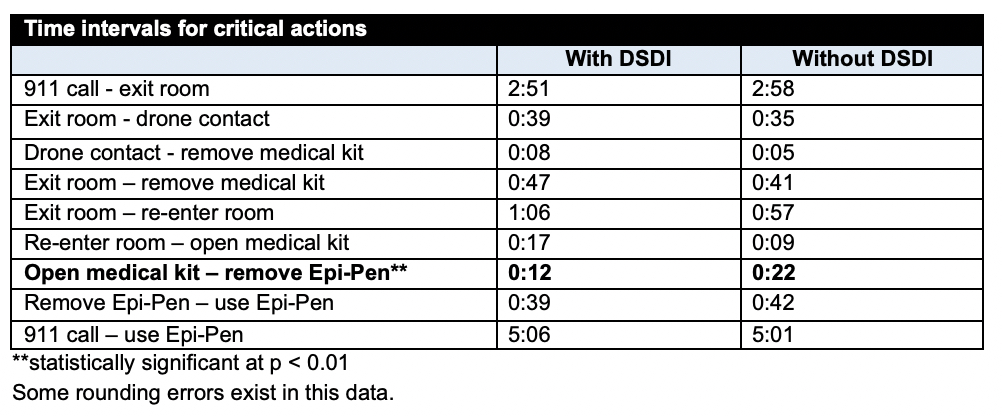Emergency Medicine: All Areas
Emergency Medicine 11
482 - Device-assisted Emergency Medical Response for Pediatric Anaphylaxis: Bystander Interaction with Prehospital Emergency Medical Devices Delivered by Drone
Sunday, April 30, 2023
3:30 PM - 6:00 PM ET
Poster Number: 482
Publication Number: 482.31
Publication Number: 482.31
Emily J. Mathias, University of Michigan Medical School, Ann Arbor, MI, United States; James M. Pribble, University of Michigan Medical School, Ann Arbor, MI, United States; Adam L. Gottula, University of Michigan, Ann arbor, MI, United States; Emma E. Davidson, University of Michigan, Ann Arbor, MI, United States; Thomas Leith, University of Michigan Medical School, Ann Arbor, MA, United States; Isabella G. Scott, University of Michigan Medical School, Ann Arbor, MI, United States; Noor K. Majhail, University of Michigan Medical School, Ann Arbor, MI, United States; Isabel Lott, University of Cincinnati, Department of Emergency Medicine, Covington, KY, United States; Nathaniel R. Hunt, University of Michigan Dept of Emergency Medicine, Ann Arbor, MI, United States

Emily J. Mathias, MD (she/her/hers)
Assistant Professor
University of Michigan Medical School
Ann Arbor, Michigan, United States
Presenting Author(s)
Background: The use of drones to deliver emergency medical care is an emerging area of interest. One prospective use of drones is in providing medical equipment for prehospital care where patient outcomes depend heavily on time-to-treatment. Prior studies have explored the use of drones to deliver naloxone or automatic external defibrillators for use by bystanders on adult patients. However, bystanders’ ability to interact with a drone to provide medical treatment to a pediatric patient has not yet been studied.
Objective: We investigated bystander interactions with a novel medical drone and a drone-portable multipurpose medpack. An epinephrine (epi) autoinjector was incorporated into the medpack to study bystanders’ ability to successfully treat a simulated pediatric patient experiencing life threatening anaphylaxis.
Design/Methods: A subgroup of 12 volunteers were randomly assigned to encounter a simulated out-of-hospital pediatric anaphylaxis patient. A simulated 911 dispatcher directed each participant to retrieve a medpack from a drone and instructed them on the use of an epi autoinjector. Participants either received standard Medical Priority Dispatch instructions (MPD) for the epi autoinjector or additional drone specific dispatch instructions (DSDI) for locating and interacting with the drone and its medpack. Bystander-drone interactions were evaluated via a convergent parallel mixed methods approach in which simulations were recorded and participants completed a survey and semi-structured interview (SSI).
Results: 83% (10/12) of participants voiced comfort interacting with the drone, and 91% (11/12) were interested in interacting with a medical drone in the future. All participants applied the epi autoinjector correctly in an average of 40 seconds of retrieving it (range 30-79). Autoinjector retrieval time was significantly shorter with DSDI (12 seconds vs 22 seconds; p = < 0.001). Key themes observed within SSI transcripts included notably divergent expectations on drone appearance, experience of high cognitive load during the simulation, and positive attitudes regarding the potential value of drone-delivered medical care in the prehospital setting.
Conclusion(s): Bystanders were able to successfully interact with our novel drone device and multipurpose medpack to provide treatment in simulated scenarios. To our knowledge, this is the first study on drone delivered prehospital care inclusive to pediatric patients. As the role of drones in medical systems continues to expand, further research is needed to define how this innovation can specifically benefit the pediatric population.

